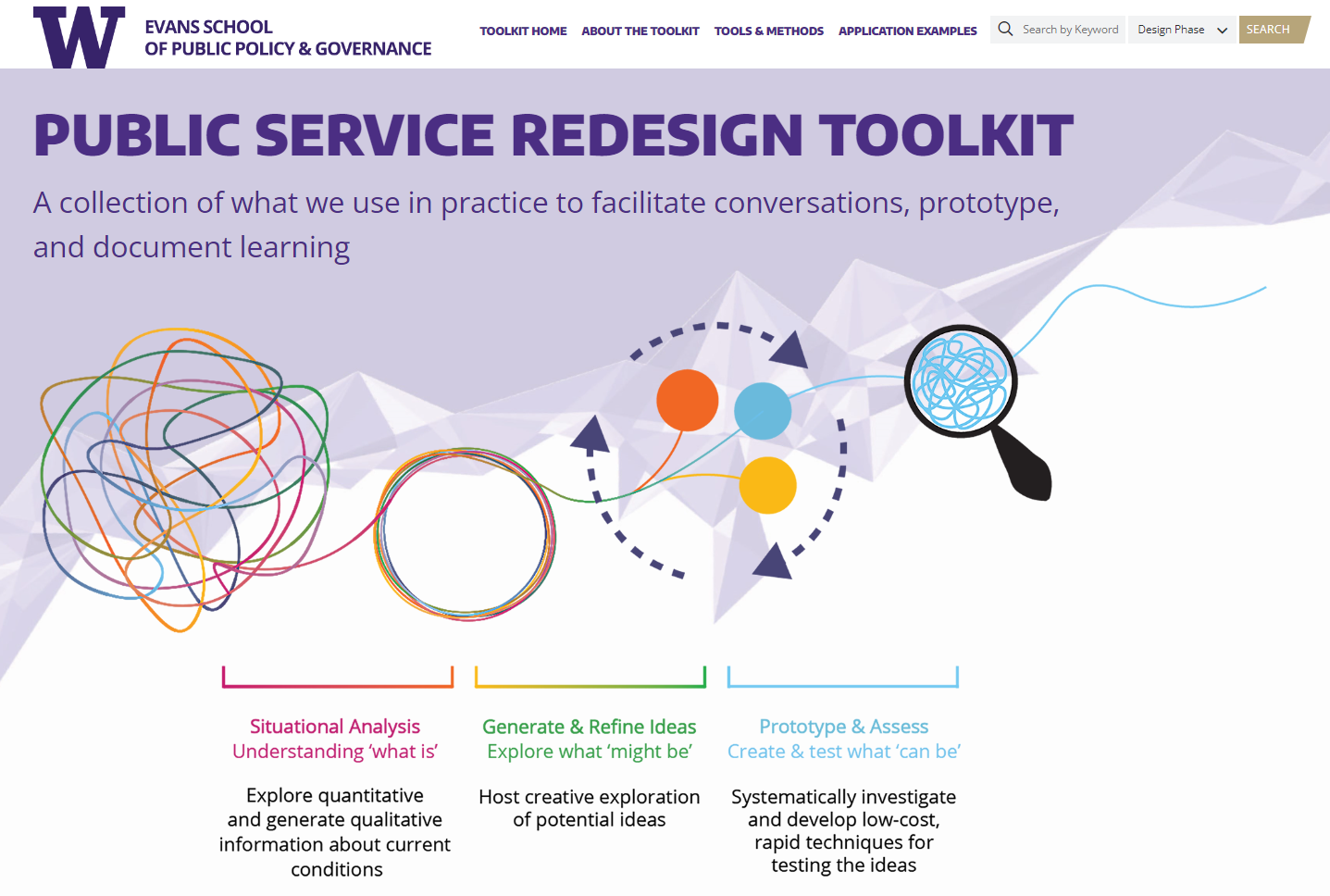
Many of today’s practices, programs, and policies were designed narrowly to respond to a need, crisis, or a subset of the population. They don’t take into consideration the complexity and interconnectedness of various systems and the communities they affect. The fragmented thinking and the operational realities that grow from it significantly limit the effectiveness of publicly funded services. Current operations do not respond to what people need when they turn to governments or nonprofits for assistance.
To make intentional systemic improvements, the Evans School believes it is important to have a clear methodology of change making. A methodology is an articulation of why – why is this work carried out in this way? It provides underlying concepts that clarify purpose and allow intentional application of a particular method or tool.
In winter quarter of 2024, the Evans School launched the Public Service ReDesign Toolkit as a public collection of what we use in practice to facilitate conversations, prototype, and document learning. The toolkit is organized into sections that correspond to the three-phase iterative approach to human-centered design processes we use in working with complex systems that focus on action and inquiry:
- Situational Analysis: understanding ‘what is’
- Generate & Refine Ideas: explore what ‘might be’
- Prototype & Assess: create & test what ‘can be’
So far we have actively used this as a resource in our new Leading Public Innovation certificate program, documented tools and methods from engagement trainings within the public health sector, and recorded how tools and methods were implemented by Evans’ policy lab – EPIC (Evans Policy Innovation Collaborative) in recent engagements. As the Toolkit continues to be used, we continue to iterate to meet emerging needs.
We invite you explore this Toolkit! As you browse through, remember – the resources shared here alone won’t make change. Clarify the underlying methodology of change, as it is the foundation for what other elements will be used and how.